There’s an interesting Smart Grid experiment underway deep in the heart of Texas. Bluebonnet Electric Cooperative, a member-owned utility with over 80,0000 meters across hundreds of miles of Central Texas, has teamed up with Smart Grid software company eMeter and Siemens Energy Inc. to provide its members with the information they need to better manage their power consumption and electric bills.
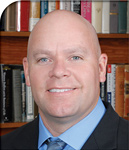
Matt Bentke
Chief Operating Officer
Bluebonnet Electric Cooperative
What’s different about Bluebonnet’s Sustainable Grid Project is the way in which we’re engaging our members in the Smart Grid implementation process long before installing any new smart meters in their homes. We fully intend to upgrade our existing meters with two-way AMI infrastructure, but before we do, it is imperative that we engage and educate our members with the same energy-saving tools that many smart meter deployments have promised they’ll deliver. The fact that we, along with eMeter and Siemens, have delivered this level of connectivity without installing any smart meters brings into focus a key question — should the meter or the customer come first?
Smart Meters Everywhere
Smart meters are being rolled out in the millions across the United States and are a critical component of most electrical utilities’ Smart Grid plans. Investor-owned, municipally owned and cooperative utilities alike are assessing the value of digital meters to their current business model from simply automated reading to more fully integrated systems. Yet not as many utilities are looking into the most fundamental challenge of shifting control from their internal systems to the customer’s home. While consumers can gain insight into almost all other aspects of their daily lives, from banking to cell phone minutes, their electrical bills are often an expensive reaction to shifting weather and seasonal fuel prices.
If empowered with basic information on when and what appliances and various electrical users in their homes actually cost each day or each month, the consumer joins their utility company as a partner to modernize the grid. Armed with better feedback about their usage, consumers will continue to enhance their responses by shifting consumption to off-peak hours so that new rate pricing models enabled by smart meters can effectively cut costs.
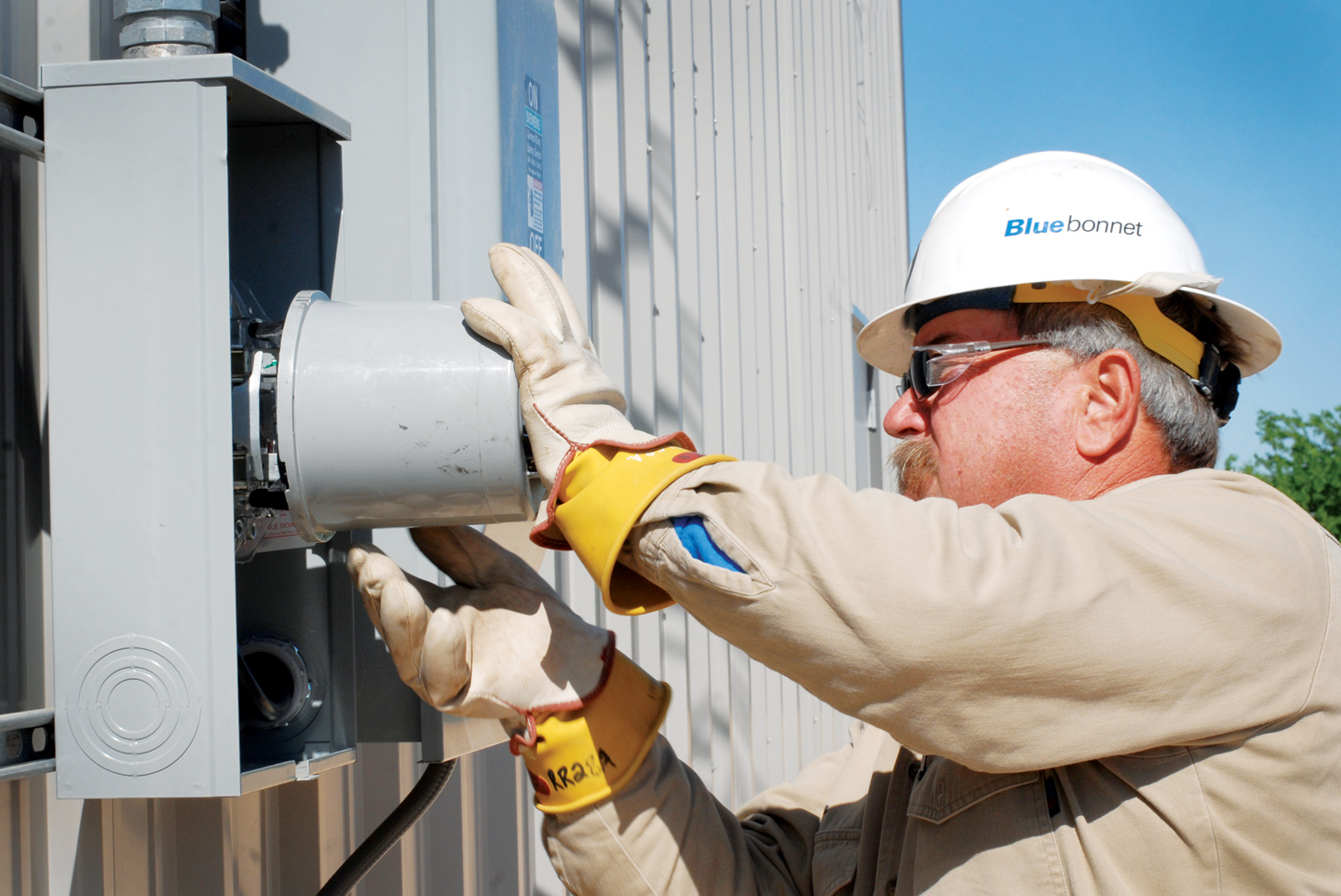
But Smart Meters Alone Won’t Do It!
In fact, the American Council for an Energy Efficient Economy concluded in a June 2010 report that smart meters on their own are not enough to cut customer costs or save energy. Instead, it will take a host of new tools and services to deliver on smart meters’ promise to save power and money. That promise is significant but absolutely attainable — ACEEE concluded smart meters could cut customer costs by 12 percent and save the country some $35 billion over the next 20 years, but only if utilities provide their customers with a range of tools to make smart decisions about their energy usage.
The Net Energy Market, our member web portal, was launched in June 2010. As of this summer, we are now giving thousands of Bluebonnet members insight into their daily electricity usage, their corresponding carbon footprint, and the power to set monthly energy usage budgets by sending online or text message alerts when those budgets are exceeded. It’s also giving members updates on our Smart Grid deployment plans to come, including time-of-use pricing and ways to compare household energy usage to that of one’s neighbors.
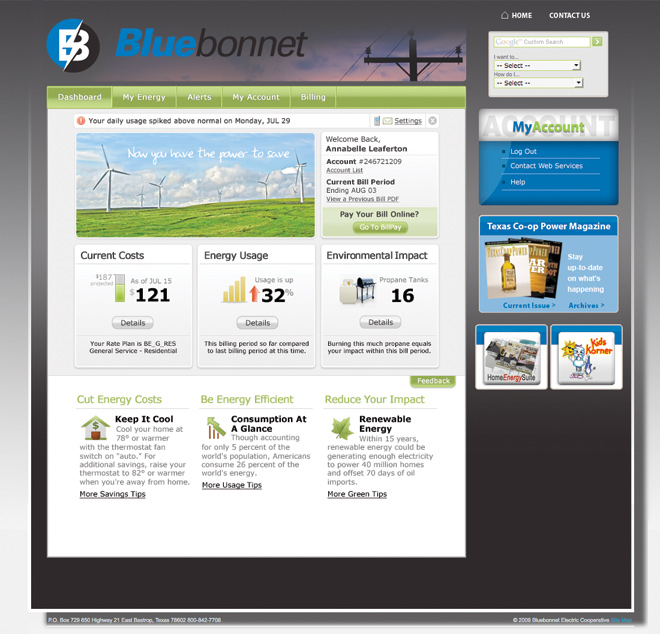
Net Energy Market Web Portal Gives Members Daily Energy Usage Insights
By connecting with our members before deploying smart meters, Bluebonnet also seeks to avoid some of the customer engagement problems that have plagued other smart meter rollouts. In the past year, several utilities have faced lawsuits alleging that newly deployed smart meters have overcharged customers. Most consumers assume that these bill discrepancies were caused by incorrect readings by the meters; however recent tests have shown that smart meters are 99.9 percent accurate.
These issues are proof positive that while specific technological problems can be easily dealt with, it’s much more difficult to change negative public perception. The Net Energy Market platform is meant not only to explain the benefits of smart meters to our members, but also to ensure they are well acquainted with watching their energy use and communicating with us before we begin installing smart meters in their homes.
Information Access is Key
Opening up energy usage information to our members has been an extensive but pivotal step in Bluebonnet’s long journey towards a transformed electrical infrastructure. Of our 80,000 meters, more than 80 percent are residential and spread out over a wide, largely rural geographic area (averaging seven meters per mile over more than 11,000 miles per line), presenting a wealth of challenges in ensuring reliable, consistent service.
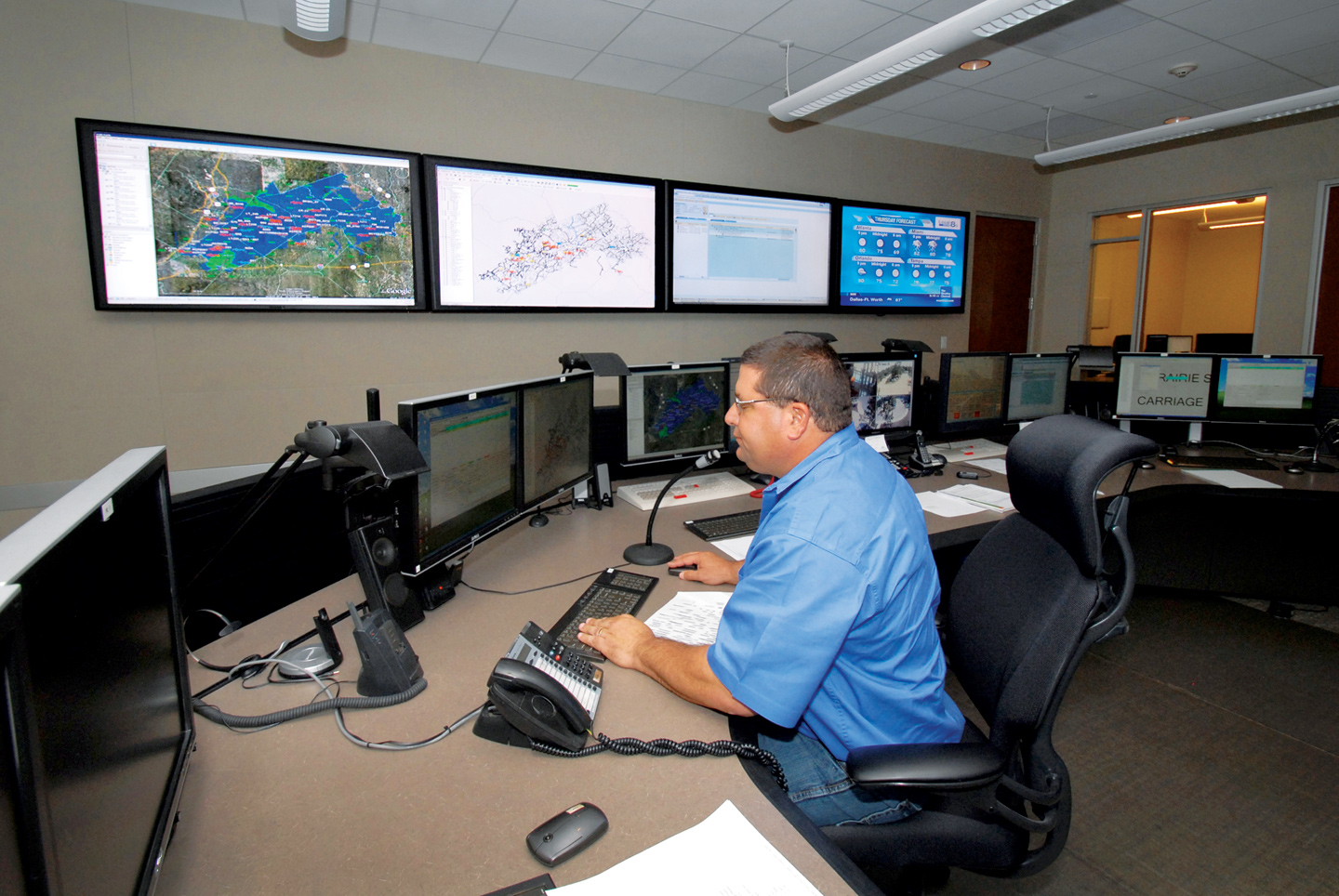
Moreover, we can anticipate large increases in electrical demand and consumption due simply to population growth in the next ten years. Because we’ve invested in the right technologies, implemented the proper programs and tools, we are confident that we’ll be able to scale up as needed and support the growing demands of our members.
In 2004, Bluebonnet embarked on an aggressive strategy to develop a new infrastructure to position us for substantial future growth. Our Board of Directors challenged us to purchase a new business operating system (SAP), develop a digital microwave network, invest in new equipment, install a Geographic Information System (GIS), and place automatic meter reading technology (AMR) throughout our service area.
What is Past is Prologue
During the next four years, we accomplished these goals while meeting the board’s requirement for maintaining competitive rates and a sound equity ratio. By 2008, we had installed SAP, AMR, GIS, a digital microwave system, an outage management system (OMS), and also placed an automatic vehicle locator (AVL) system and a laptop computer in each of our trucks allowing field employees to efficiently utilize the new technology.
It’s important to remember that we are not rejecting smart meters as part of our future plans, as demonstrated by our previous installation of earlier generation AMR digital meters throughout our service area. Due to our early commitment to transforming the grid infrastructure, those Aclara meters communicate over power lines and deliver reliable reads and outage detection, an enormous realization of efficiency even before we put the first AMI meter in the field, and were managed on software from the same company. Now, data from those meters is managed through our new Siemens/eMeter platform — a move that allows us to test the platform’s capabilities on our existing infrastructure, while ensuring its ability to accommodate whatever smart meters we may install in the future.
Transitioning for the Future
This fall, we will begin deployment of a demand response pilot project in our territory, as well as a host of distribution automation plans, all of which we hope to manage on the Siemens/eMeter platform. Utilizing an integrated approach to the Smart Grid will help us avoid the unexpected costs of integrating disparate systems after installation. The pilot will assess the effectiveness of managing load based on profiles that participating members set up through the Net Energy Market for their thermostat, hot water heater, etc.
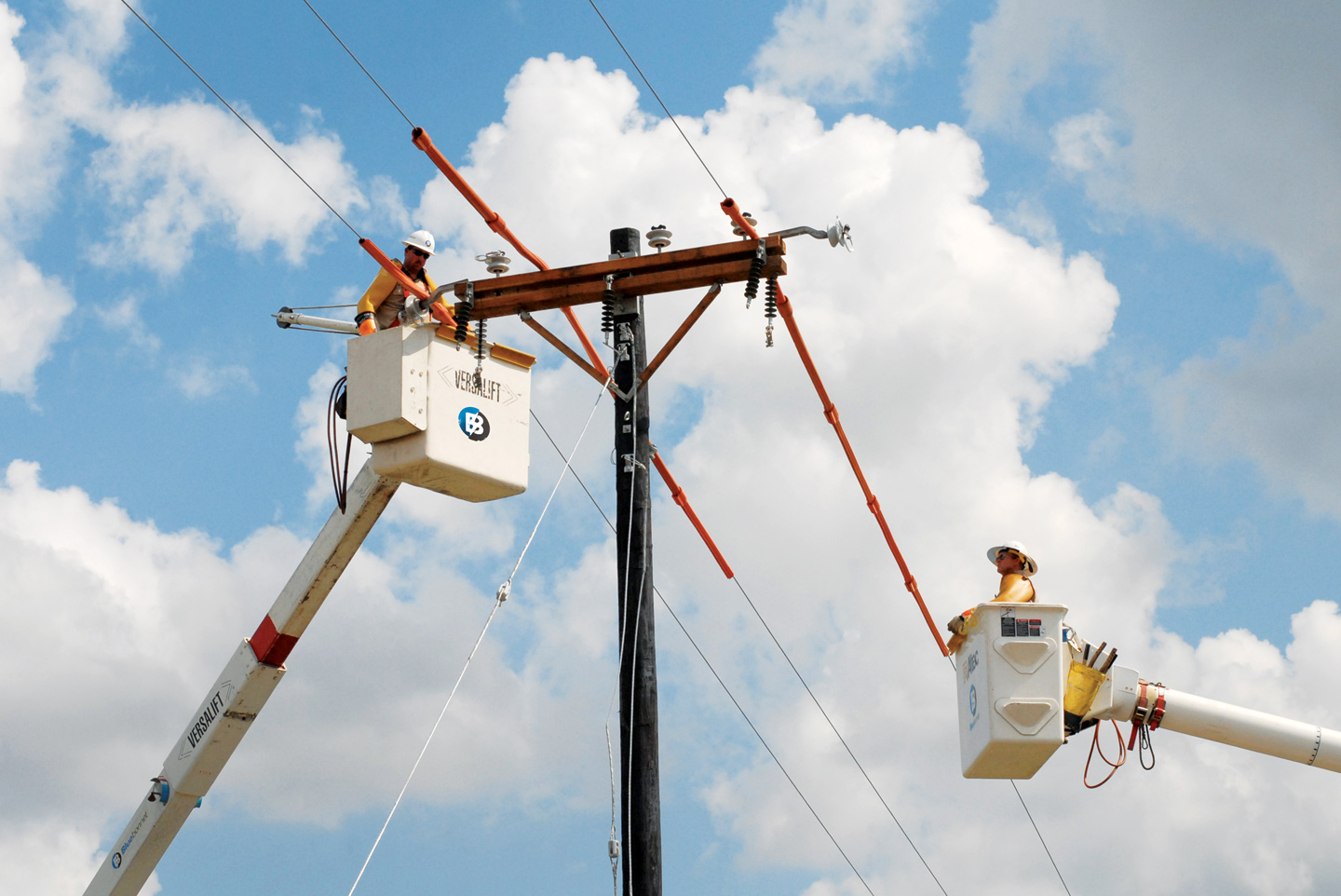
In preparation for this pilot, we have increased the level of consistent messaging delivered on the Sustainable Grid Project through a variety of channels, including bill inserts, our website, social media and local news outlets. Outlining the three central themes of our Project – saving money for members, improving service levels to members, and improved environmental impact – we intend to address any community concerns over the course of the year-long pilot and as we move further forward in our transition to AMI digital meters.
As our Chief Executive Officer Mark Rose has continually said, if we are to envision an electric delivery system worthy of the 21st century and beyond, then we must think past the next round of traditional generation sources or even the more popular renewable energy programs. It is not as simple as 45 more nuclear plants, cleaner coal, solar paint or 40,000 megawatts of wind.
We must fundamentally transform the partnership between the utility and the consumer by empowering the latter with as much information and as much access to the grid as is held by the distributor or the wholesale generator. From our member service representatives to the linemen and staking crews, consumer empowerment is a shared vision and philosophy. For us, the answer is simple: putting our members first is the smartest way to ensure our Smart Grid success.
About the Author
Matt Bentke is Bluebonnet’s Chief Operating Officer. He is responsible for oversight of all daily operations and manages 10 business units: Field Operations, Engineering, Member Services, Administration, Purchasing, Operations Technology, Government Affairs and Economic Development, Public Affairs and Communications, Corporate Initiatives, and Safety. He leads Bluebonnet’s senior leadership team. Prior to becoming Chief Operating Officer in 2008, Matt served as Manager of System of Operations and Manager of Finance and has been with Bluebonnet since 2000. Matt serves on the Lower Colorado River Authority’s generation advisory board. He graduated from Texas A&M in 1995, with a BBA in Business Management.
Photos courtesy of Sarah Beal, Staff Photographer, Bluebonnet Electric Cooperative.







